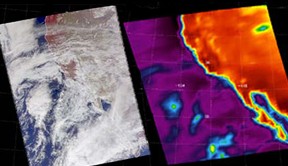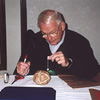The picture on the right shows how the new instrument sees the world. The red colors are warm air rising from the west coast of the United States and the purple colors are cool air over the Pacific Ocean. For comparison, the image on the left shows what we would see with our own eyes. Both pictures were taken on March 11, 2003.
Click on image for full size
NASA/JPL
A New Look at Weather!
News story originally written on May 14, 2003
Figuring out what tomorrow's weather will be can be a tough job. But now scientists have made a new tool that will make it easier. It looks at the weather from above!
The tool is orbiting Earth aboard NASA's Aqua satellite. It looks at Earth's atmosphere from space! Even though it is very far away, it can measure what is going on within our atmosphere. This will help scientists figure out what the weather will be like tomorrow. It will also help scientists follow weather events such as hurricanes.
Last modified May 6, 2003 by Lisa Gardiner.
You might also be interested in:
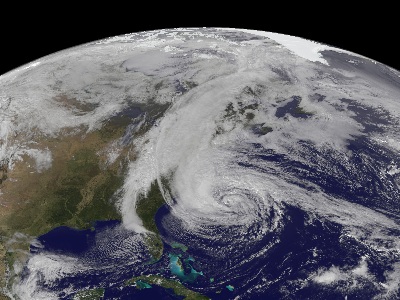
Hurricanes form in the tropics over warm ocean water. The storms die down when they move over land or out of the tropics. At the center of the rotating storm is a small area of calm weather and clear skies
...more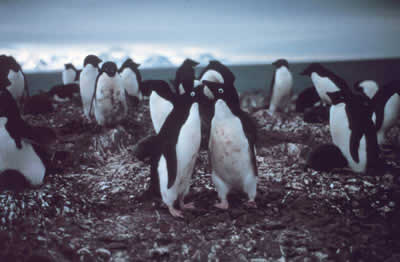
Scientists have been studying special places of the chilly ocean near Antarctica. They found that these places are favorite spots for thousands of penguins! Much of the ocean near Antarctica is covered
...more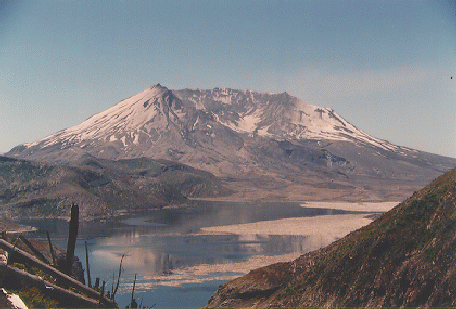
Mount St. Helens, a volcano on the west coast of the United States, has been quiet for 18 years. But in the last week it has not been quiet at all! It has been puffing steam and ash and a flow of lava
...more
Wonder why you never see a dinosaur in your yard? Well, they are extinct of course! So, there are no more of them living on Earth. Dinosaurs became extinct 65 million years ago. They were not the only
...more
A large meteor exploded in the sky near Chicago shortly after midnight on March 28, 2003. People in Wisconsin, Illinois, Indiana, and Ohio saw the meteor break apart as it flew across the sky. Many pieces
...more
Look at this picture! The light blue parts are coral reefs just under the water’s surface. How many reefs do you see? The crew of the International Space Station (ISS) took this picture while looking
...more
There will be an eclipse of the Moon on Thursday night, May 15, 2003. The shadow of the Earth will fall on the Moon, and the Moon will get dark! The Moon will not be so dark that you can't see it. The
...more


